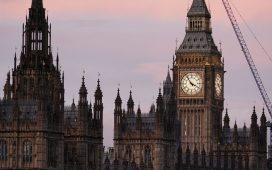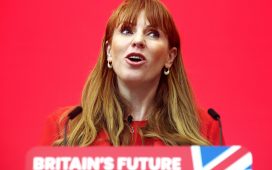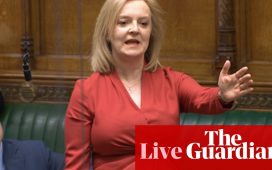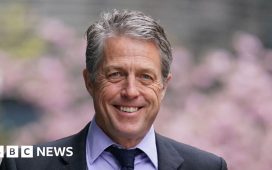The news that seven Labour MPs have quit the party and formed what they call the Independent Group has brought comparisons with the birth of the Social Democratic Party (SDP) almost four decades ago.
So are those comparisons justified?
What was the SDP?
The SDP began in January 1981 with the Limehouse Declaration, a statement of intent by four former Labour cabinet ministers – Roy Jenkins, David Owen, William Rodgers and Shirley Williams – to quit in protest against the left-wing path being taken under the party’s then leader, Michael Foot. The “Gang of Four”, as they became known, said they could not and would not stand on Foot’s election manifesto that pledged to leave the European Union and Nato.
The gang membership grew to a total of 14 MPs – 13 of whom had defected from Labour, and one from the Tory party – before forming an alliance with the Liberal Party. Throughout 1981 and in the first quarter of 1982, this alliance was level-pegging with the Conservatives and Labour in the opinion polls, claiming around 50% in polls in December 1981.
However, in the wake of the Falklands War, the SDP-Liberal Alliance fell back at the 1983 general election, winning 25% of the national vote – close behind Labour’s 28%, but well behind the 44% secured by the Conservatives.
The new party blamed the UK’s first-past-the-post electoral system for its failure to convert its significant electoral support into seats in Parliament, with only 23 Alliance MPs elected, just six of whom were members of the SDP.
Following election night, Alliance leader David Steel said: “I feel a real sense of outrage at the vast number of votes we picked up with so little to show for it in the way of seats.”
By 1987, “almost all the Labour MP defectors to the new party had lost their seats”, says Robert Shrimsley in the Financial Times. But while the party failed to win power in the 1980s, its eventual merger with the Liberal Party to become the Liberal Democrats should not be seen as a failure, he argues.
“The SDP’s real goal and real success was in keeping a very left-wing Labour Party out of power until it understood that the price of refusing to compete for the political centre was Conservative hegemony,” Shrimsley writes.
Having failed to reform Labour from within, “they forced it to reform from without, creating the conditions for Tony Blair to drive it into the centre and back into power”, he adds.
Does the SDP still exist?
There have been two incarnations of the SDP following the dissolution of the original party in 1988. The first was immediately created by original member David Owen and lasted for two years before being dissolved following a disastrous 1990 by-election, in which the party’s candidate lost to Screaming Lord Sutch’s Official Monster Raving Loony Party.
The second was created from the ashes of Owen’s party in 1990 and remains a minor political party to this day, concentrating primarily on local council elections.
In the proceeding years, the party’s political orientation has drifted towards Euroscepticism, despite the origins and pro-EU political leanings of the original Gang of Four. The SDP’s website says: “The European Union or any other supranational entity is not – and will never be – a social democratic enterprise.”
In November 2018, the party attained its first ever Member of the European Parliament, when Patrick O’Flynn, MEP for East of England, defected from UKIP. O’Flynn told the BBC: “I have decided to join the resurgent SDP, which campaigned for Brexit during the referendum and espouses broad and moderate pro-nation state political values that I – and I believe many of our voters from 2014 – will be delighted to endorse.”
Are there parallels with the Independent Group?
“I don’t think the comparison with the SDP stands up to scrutiny,” said Angela Smith, one of the seven Labour MPs who have formed the new group.
Yet “many of the issues – insufficient commitment to Europe, defence policy, left bullying – which drove the new group today were pretty much the same as those behind the SDP and the centrist stance of the new group, as articulated by Chuka Umunna, sounds pretty similar too”, says The Times.
All the same, this new Gang of Seven “lack anyone of the stature, public recognition or intellectual heft of the SDP leaders”, says The Guardian’s Polly Toynbee. Chris Leslie is the only one with ministerial experience – four years as a junior minister under Tony Blair.
The 1980s rebels, on the other hand, “had all held serious government office”, Toynbee notes.
The Independent’s Sean O’Grady warns that the new party “will run into the exact same obstacles that the SDP did”.
The electoral system “strangles new, insurgent parties at birth”, and “considering the two main parties (in England at least), won a record joint share of the vote, not seen for decades”, it’s likely the new grouping will continue to struggle, O’Grady predicts.
The SDP “never quite decided if it wished to be a new Labour Party or a new Liberal Party and this ultimately produced a split”, says The Times.
It is hard “even to decide where to concentrate resources if you don’t decide who you are trying to represent”, says the newspaper – and that means the biggest issue for the new group “will be how much of a rhetorical and political appeal to make to Remainer Tories”.














